Unsolved Chess Mysteries (22)
By Edward Winter
Advice from Alapin
C.N. 3825 quoted from page 10 of Curso científico de ajedrez by R. Réti
(Madrid, 1986):
‘El maestro ruso Alapin recomendaba al principiante cambiar las
piezas cuanto antes.’ [The Russian master Alapin recommended that
the beginner should exchange pieces as soon as possible.]
Where did Alapin give such advice? The quote, incidentally, is on page 13 of
the French translation, Cours scientifique d’échecs (Paris, 1998).
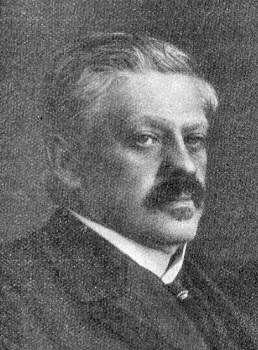
Simon Alapin
Lasker’s deepest game
C.N. 772 (see page 49 of Chess Explorations) gave a game from one of
Walter Penn Shipley’s scrapbooks (whose cut-off point was the early years
of the twentieth century). The item was published in an unidentified newspaper,
introduced as follows:
‘Some years ago Herr Lasker was asked which game he considered his
deepest. In reply he instanced the following beautiful partie he won from
van Vliet.’
Louis van Vliet – Emanuel Lasker
London, March 1892
Queen’s Gambit Declined
1 d4 d5 2 Nf3 Nf6 3 e3 e6 4 c4 c6 5 Nc3 Bd6 6 Bd2 Nbd7 7 Be2 Ne4 8 Qc2 f5 9
O-O O-O 10 Be1 Qf6 11 Nd2 Qh6 12 f4 Ndf6 13 Ndxe4 dxe4 14 Bg3 Bd7 15 Rad1 Kh8
16 Rd2 Rfc8 17 c5 Be7 18 b4 a5 19 b5 cxb5 20 Bxb5 Bxb5 21 Nxb5 Ng4 22 Re2
22...e5 23 h3 Nxe3 24 Rxe3 exd4 25 Nxd4 Bxc5 26 Qb2 Qf6 27 Rd1 Rd8 28 Bf2 Bxd4
29 Rxd4 Qxd4 30 Qxb7 Rab8 31 Qa6 Qd6 32 Qxa5 Qxf4 33 g3 Qg5 34 Rxe4 Qf6 35 Rf4
Rd1+ 36 Kh2 Qc6 37 g4 Qh1+ 38 White resigns.
Where did Lasker state that this game was his deepest, and has it ever been
annotated in depth? Lasker himself offered some notes on pages 3-4 of his magazine
the London Chess Fortnightly, 15 August 1892, but without any indication
that he regarded the game as outstanding. He described 22...e5 as ‘the
winning move’ and broke off with an abrupt ‘And won’ after
his 28th move.
Tarrasch v Lasker
Bernd Graefrath (Mülheim an der Ruhr, Germany) wrote in C.N. 2192:
‘In my research on Emanuel Lasker I have found conflicting data
on a move in the fourth game of his match with Tarrasch (Düsseldorf, 24 August
1908). Lasker made his famous rook manoeuvre from e7 via e5 to c5. On move
15 did the white queen go from d4 to c3 or from d4 to c4?
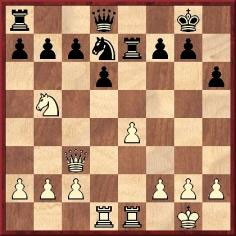
The earliest sources by both Lasker and Tarrasch give 15 Qd4-c3 (and 17
Qc3-b3), as is shown by the Olms volume Die Schachwettkämpfe Lasker-Tarrasch
um die Weltmeisterschaft 1908 und 1916. But later sources give 15 Qd4-c4
and 17 Qc4-b3. These include Réti’s Die neuen Ideen im Schachspiel,
Tartakower’s Die hypermoderne Schachpartie and, even, a book by
Lasker himself, Brettspiele der Völker (Berlin, 1931), page 79. I think
that the older sources are more reliable, but how did the wrong move originate
and spread?’
Clarification of this matter is still being sought.
The mysterious G.H. Derrickson
C.N. 2103 discussed George H. Derrickson of Philadelphia, USA, who died on
16 April 1862 while still in his teens and whom several nineteenth-century sources
referred to as a potential second Morphy. His only widely-published game is
a brilliancy played in Philadelphia in 1860 against an amateur, who was identified
(rightly or wrongly?) as J. Smith on pages 41-42 of America’s
Chess Heritage by Walter Korn (New York, 1978): 1 e4 e5 2 Bc4 Nf6 3 Nf3
Nc6 4 O-O Bc5 5 d3 d6 6 Bg5 Bg4 7 h3 h5 8 hxg4 hxg4 9 Nh2 g3 10 Nf3 Ng4 11 Bxd8
Bxf2+ 12 Rxf2 gxf2+ 13 Kf1 Rh1+ 14 Ke2 Rxd1 15 Nfd2 Nd4+ 16 Kxd1 Ne3+ 17 Kc1
Ne2 mate.
As reported in C.N. 2320, Jeremy Gaige (Philadelphia, PA, USA) informed us
that according to contemporary reports Derrickson died at the age of 17, whereas
official records gave his age as 18. His death certificate stated that he died
of rheumatism, suggesting rheumatic fever. Mr Gaige also sent us a copy of the
Philadelphia Evening Bulletin of 26 April 1862 (page 7), which announced
the death of a player whose mental gifts had ‘promised very high rank
for him in the future’, and he pointed out that there was a photograph
of Derrickson in the scrapbooks of George Allen at the Library Company of Philadelphia.
In C.N. 3263 we were able to present that portrait, with the Library’s
kind permission:
An extract from an article by Miron Hazeltine reproduced on pages 365-370 of
the December 1881 issue of Brentano’s Chess Monthly was given in
C.N. 3277:
‘That young gentleman as tall as Kappner [also of the Morphy Chess
Rooms], but something heavier and evidently not yet physically developed who
looks always “as trim as though just out of a band-box” is Geo.
H. Derrickson of Philadelphia. He is in New York a good deal, and spends his
leisure and loose change at “The Morphy”. Very handsome is he;
matured, his will exceed the beauty accorded to most men. And this outward
seeming is the true semblance of his mind. Gentle as a girl, sympathetic,
affectionate. Large hazel, thoughtful eyes; plump red cheeks, round, full
forehead, and a well-balanced head. Grave and judicial in manners and speech
– too much so, we think, for one of his years. Was it in sad prescience
of his early departure from among us? In everything he does you will observe
this one controlling motive, always – an eager ambition to excel. This
insures him, to a marked degree, a rapid rise in everything he undertakes.
In chess, both in play and as a problematist, he already stands high, with
the most honorable aspirations for the future.’
Several C.N. items have included problems composed by Derrickson, and C.N.
2441 gave one of the few games by him that have so far come to light. Rather
similar to the miniature given above, it was supplied by Neil Brennen (Spring
City, PA, USA), from the Philadelphia Evening Bulletin, 23 December 1860:
J. Rowand – G.H. Derrickson
Philadelphia, 1860
Giuoco Piano
1 e4 e5 2 Bc4 Nf6 3 d3 Bc5 4 Bg5 d6 5 Nf3 Nc6 6 O-O Bg4 7 h3 h5 8 hxg4 hxg4
9 Nh2 g3 10 Ng4 gxf2+ 11 Nxf2 Nxe4 12 Bxd8 Ng3 13 d4 (Instead, 13 Bxf7+ Kxd8
14 Bh5 Rxh5 15 Qxh5 would have put Black off his stroke.) 13…Nxd4 14 Bxf7+
Kxf7
15 Nh3+ Nf3 mate.
Richardson was described on page 73 of G.C. Reichhelm’s Chess in Philadelphia
(Philadelphia, 1898) as ‘a remarkably brilliant player’, but relatively
little has yet been discovered about him.
Steinitz versus God

W. Steinitz
Stories about Steinitz, God, telephones, electricity, madness, etc. are, alas,
a mainstay of popular chess writing, and it is difficult, if not impossible,
to disentangle and appraise all the contradictory versions. See our feature
article Steinitz
versus God.
Kirkham game?
This game appears in various databases: 1 d4 Nf6 2 Bg5 Ne4 3 Bh4 c5 4 f3 Qa5+
5 c3 Nd6 6 d5 g6 7 e4 b5 8 Bd3 Bg7 9 Ne2 b4 10 Qd2 c4 11 Bc2 b3 12 Bd1 Nb5 13
Bf2
13...Qxa2 14 Rxa2 bxa2 15 Na3 Nxa3 16 Qc1 Nb1 17 Bc2 a1(Q) 18 Bxb1 d6 19 O-O
Nd7 20 White resigns. As noted on page 147 of Kings, Commoners and Knaves,
the details provided are inconsistent, e.g. Stackpole v Kirkham, 1881 and B.
Kirkham v G. Mackenzie, 1881. Is it really a nineteenth-century specimen of
1 d4 Nf6 2 Bg5 (Trompowsky’s Opening)?
A tableau
This diagram was given in C.N. 3127:
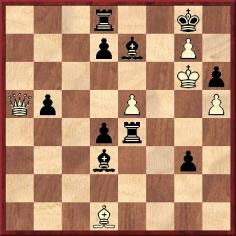
White, to move, announced mate.
The position arose in a game played in 1874 in Dorpat (present-day name: Tartu)
between unnamed opponents. The forced mate is 1 Bb3+ Bc4 2 Bxc4+ d5 3 Qxd8+
Bxd8 4 Bxd5. If 1…d5, White plays 2 Qxd8+ Bxd8 3 Bxd5 mate.
However, it is the third possibility which presents the table-turning tableau:
1 Bb3+ d5 2 exd6+ Re6 mate.
Unfortunately the confusing German text in our source (Baltische Schachblätter,
Heft 11, 1908, page 54) does not make it sufficiently clear how the game ended.
The magazine credited the position to the Düna-Zeitung, but it remains
to be discovered whether that publication had been more explicit.
Below, for reference, is the full text from the Baltische Schachblätter:
‘In einer von F. Amelung notierten Endstellung, die einer in Dorpat
im Jahre 1874 gespielten Partie entstammt, hatte Weiss seinem Gegner Schwarz
das Mat angekündigt. Nach dem Zuge 1 Ld1-b3+ war Schwarz bei d7-d5 schon in
3 Zügen und bei Ld3-c4 in 4 Zügen matgesetzt.
Zur Überraschung der Zuschauenden ergab sich aber, als die Partie von
zwei Amateuren in der Diagrammstellung durchgeführt wurde, noch ein ganz anderes
drittes Resultat. Weiss zog nämlich 1 Lb3+ und Schwarz antwortete darauf mit
d7-d5. Als dann Weiss 2 exd6+ gezogen hatte, da folgte der Matzug –
jetzt aber hatte Schwarz merkwürdigerweise matgesetzt. Tableau!
Die Lösungen obiger drei Fälle werden unseren Schachfreunden wohl nicht
viel Kopfzerbrechen machen.’
Resignation in a drawn position?
Karsten Müller (Hamburg, Germany) wrote in C.N. 4677:
‘The final position of Colle v Grünfeld, Carlsbad, 1929 is often
given with the black king on e2, allowing Grünfeld to draw with 77...Kd3.
See, for instance, page 18 of Endgame Tactics by G.C. van Perlo (Alkmaar,
2006). However, I would expect Black’s king to be on f1 in the final
position. Can you shed any light on the matter?’

Above is the position as given in the Dutch book, which states that Black resigned
here although he could have drawn with 77...Kd3 78 Kg5 Ke4 79 Kxh5 Kf5.
We noted in the same C.N. item that the game appeared, with annotations by
Colle, on pages 384-385 of IV. Internationales Schachmeisterturnier Karlsbad
1929 (Vienna, 1930), where the conclusion was presented as follows:
71 g7 f3+ 72 Kh2 f2 73 g8(Q) f1(Q) 74 Qc4+ Ke1 75 Qxf1+ Kxf1 76 Kg3 Ke2 77
Kf4 Resigns. This corresponds to the final position as given by van Perlo.
Colle’s notes did not mention that Grünfeld resigned in a drawn position.
Was this an omission/oversight or did the drawing opportunity never arise because
the game-score in the tournament book was faulty? We added that if White’s
72nd move had been Kg3, rather than the odd-looking Kh2, there would have been
no draw for Grünfeld because after the exchange of queens the white king would
reach f4 at move 76, and not move 77.
The immediate question, therefore, was whether a contemporary source existed
which gave White’s 72nd move as Kg3. No such publication has yet come
to light, but in C.N. 4687 Christian Sánchez (Rosario, Argentina) pointed out
that 72 Kg3 appeared in Znosko-Borovsky’s endgame book, which was published
in a number of languages, the first of them being English (How to Play Chess
Endings in 1940). Below is the relevant passage from page 255 of the French
edition, Comment jouer les fins de parties aux échecs (Lille, 1952):
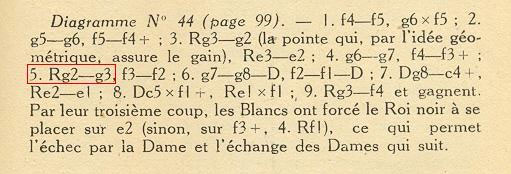
On what grounds did Znosko-Borovsky diverge from the move given in the Carlsbad,
1929 tournament book?
The Termination
One of the most notable mysteries and controversies is the conclusion of the 1984-85
Karpov-Kasparov world championship match. Our
feature
article, recently supplemented, has pointed out some of the misreporting (to
employ an extreme euphemism) of the affair, but in the present item we approach
the Termination from another angle: would it be possible to compile a bibliographical
digest of the published statements of all the parties (players and officials)
directly involved? Any such citations, and especially from little-known sources,
will be much appreciated. The scope for collating, investigating and sifting evidence
remains vast and, to reiterate our remark in C.N. 3328, it is to be hoped that,
even now, an enterprising writer will be able to pull off the feat of obtaining
from Campomanes his ‘definitive’ version of the events in Moscow.
As matters currently stand, of course, no respectable chess writer can claim
(or, we believe, has claimed) to know for sure what happened in Moscow in February
1985.
Submit information
or suggestions on chess mysteries
 Edward
Winter is the editor of Chess
Notes, which was founded in January 1982 as "a forum for aficionados
to discuss all matters relating to the Royal Pastime". Since then around
5,300 items have been published, and the series has resulted in four books by
Winter: Chess
Explorations (1996), Kings,
Commoners and Knaves (1999), A
Chess Omnibus (2003) and Chess
Facts and Fables (2006). He is also the author of a monograph
on Capablanca (1989).
Edward
Winter is the editor of Chess
Notes, which was founded in January 1982 as "a forum for aficionados
to discuss all matters relating to the Royal Pastime". Since then around
5,300 items have been published, and the series has resulted in four books by
Winter: Chess
Explorations (1996), Kings,
Commoners and Knaves (1999), A
Chess Omnibus (2003) and Chess
Facts and Fables (2006). He is also the author of a monograph
on Capablanca (1989).
Chess Notes is well known for its historical research, and anyone browsing
in its archives
will find a wealth of unknown games, accounts of historical mysteries, quotes
and quips, and other material of every kind imaginable. Correspondents from
around the world contribute items, and they include not only "ordinary
readers" but also some eminent historians – and, indeed, some eminent
masters. Chess Notes is located at the Chess
History Center.



















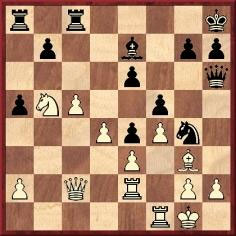

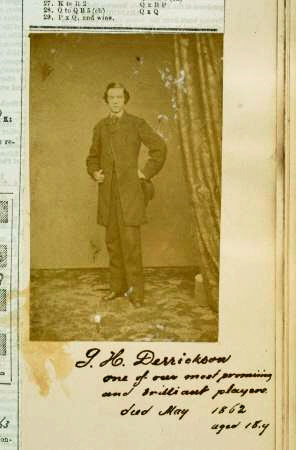







 Edward
Winter is the editor of
Edward
Winter is the editor of 




